 |
Mustang
III FX931 - High Bentham
14th February 1945 |
Last
updated: 20.11.2017
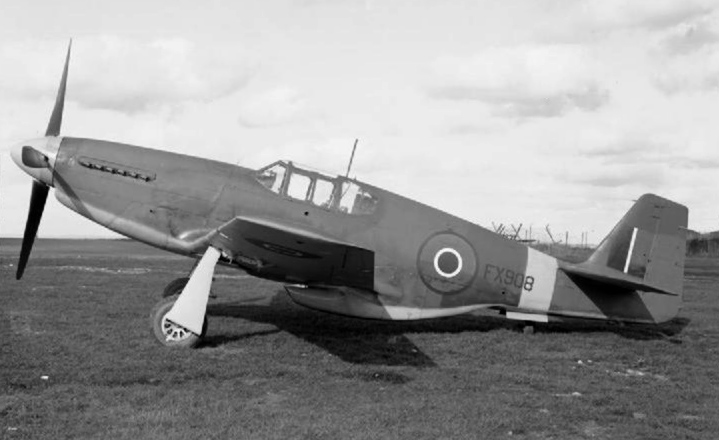
|
| RAF Mustang III (P-51-B) |
| Type |
Serial |
Unit |
Base |
Duty |
Crew
|
Fate
|
| Mustang III (P-51-B) |
FX931 |
No. 61 O.T.U. Squadron |
RAF
Rednal |
Cross
Country Exercise |
Sgt.
Pawel Struniewski |
K. |
This aircraft was an RAF Mustang
III Serial No. FX 931 from No. 61 O.T.U. based at Rednal, near
Oswestry, North
Shropshire and on the 14th February
1945 was being flown by
Polish Air Force pilot Sergeant Pawel Struniewski (P704960) on a high
altitude cross-country training
flight. The aircraft was built in 1943 as P-51B-1-NA
Mustang 43-12226 by North American Aviation Inc. at Inglewood,
California, USA as part of batch c/n
102-24541/24940. It was fitted with a Packard
Merlin 61, V-1650-3 and a Hamilton Hydromatic four bladed propeller. At
the time of its loss it was configured as a standard RAF Mustang III
with no
fuselage tank or drop tanks fitted and was armed with 4 x .50 calibre
machine
guns, but carried no ammunition on its last flight. It was
also noted that the aircraft was
fitted with a Pioneer Type A12 oxygen economiser unit and that both the
airframe and engine had only completed 82 hours flying time.
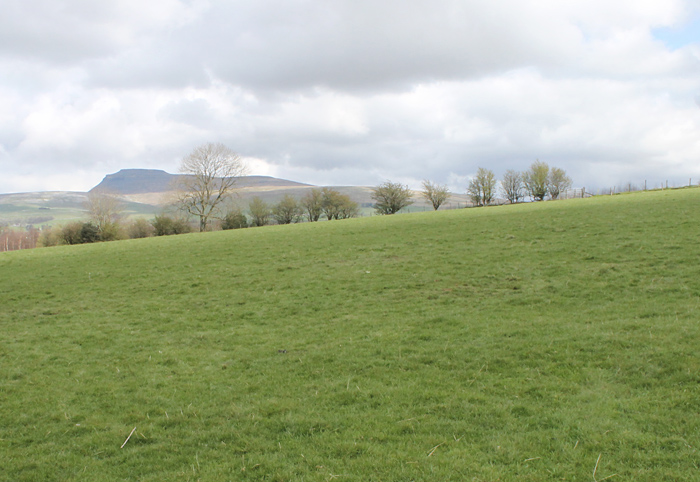 |
| Crash Site of Mustang III FX931 - Shallow crater just
about dicernable centre foreground. |
On the 14th
February 1945 the
aircraft was one of five taking part in a six-stage cross country
flight at
15,000 feet, the route being; Base – Preston – Derby – Base –
Hereford
–
Lichfield – Base and oxygen was to be used throughout the flight. The
aircraft
took off at 15 minute intervals, with Sgt. Struniewski departing at
09:00 and
his ETA over Preston was 09:42. At 09:45 he was asked if was over the
first
point by ground control and he replied he was "over cloud, couldn’t see
and was going down". Another pilot stated that when he reached the
first
point, he had encountered 10/10th cloud cover at
15,000 feet. The
pilots had been instructed not to descend through such cloud cover, but
to find
a gap before descending to ascertain their position and despite the
adverse
condition three of the pilots succeeded in completing the exercise.
On the ground near
High Bentham a number of
people heard the aircraft, which was hidden from sight by
the cloud
cover that prevailed over the area and alerted by the unusual sound of
an
aircraft diving, several looked up in time to see the aircraft break
out of the
cloud in a shallow dive. However, as they watched, the angle the
aircraft
almost immediately started to become steeper until it appeared to enter
a
vertical high speed dive. The witnesses saw the aircraft dive into the
ground
streaming white vapour as it fell, but accounts differed as to what
happened to
the aircraft immediately prior to and on impact – perhaps depending on
how
clear their view was. The aircraft crashed at approx. 09:45 hours, with
the
starboard wing breaking away from the fuselage immediately prior to
impact and
the remainder of the aircraft striking the ground with the port wing
hitting first
and disintegrating completely. The pilot was killed instantly and the
Squadron’s ORB notes that RAF personnel from Cark recovered the pilot’s
body
and he is buried at Barrow-in-Furness Cemetery, Section 7, Grave 2619.
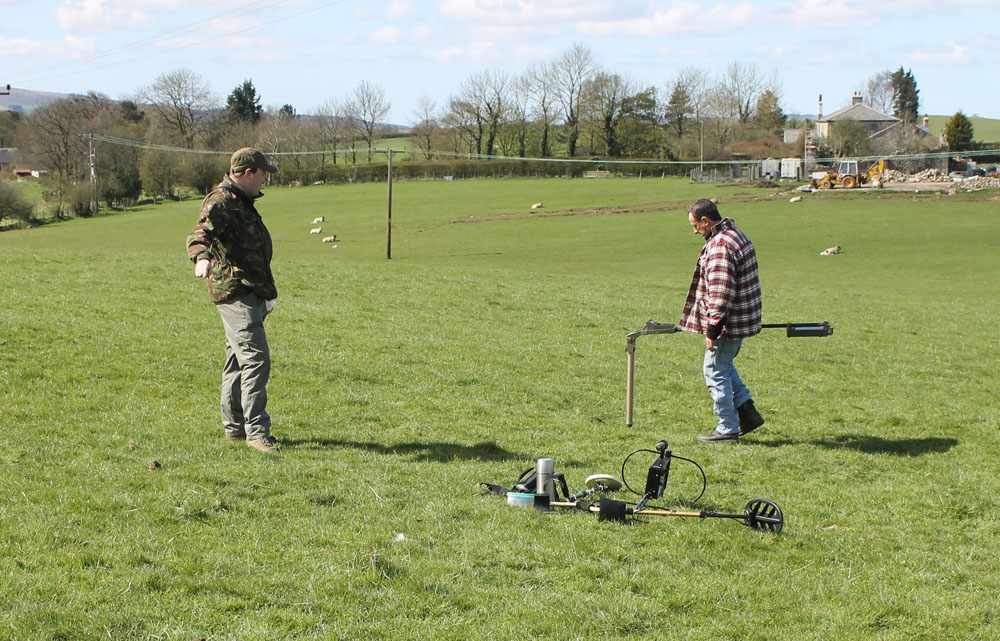 |
 |
| Initial
survey of the main crater using metal detectors and a Foerster
Magetometer |
Mapping
out signals across the main crater - Only selected shallow
contacts were uncovered at this stage for identification purposes |
Our
initial research began
with the RAF Form 1180, which contained the usual brief information and
some
indication of the sequence of events and location of the crash site
including,
unusually, the name of the farm and a grid reference.
However a check at the PRO revealed a
transcript of a full
AIB report, comprising
some 15 pages and including several
eyewitness accounts. The report highlighted a number of inaccuracies
recorded
on the Form 1180, including the time of the crash and some slightly
misleading
statements regarding the altitude of the flight and the wing breaking
away
during the descent. Talking to locals did not reveal any first-hand
accounts of
the crash, but a few individuals recalled a previous dig at the site
and
information probably given to them at that time. There did seem to be
some
evidence that the local assumption, at the time of the crash, was that
oxygen
failure was a probable cause. But from the documentary evidence, this
was thoroughly
investigated and discounted, though it does appear that the pilot was
in some
way incapacitated as there was no evidence that he made any attempt to
save
either the aircraft or himself.
The
crash site was known to have been
subject to a concerted post-crash recovery operation to locate the body
of the
pilot for burial and it is believed the bulk of the aircraft’s remains
were
also removed at this time. The site was later levelled by the landowner
and
then circa 1987 it was excavated by a group, who dug by hand with
limited
success - the largest part known to have been found was the snapped off
base of
a propeller blade. An initial visual survey of the field revealed a
likely shallow
depression feature - probably sinkage resulting from the previous
excavation,
rather than the crash and a metal detector grid search soon revealed a
scatter
of smaller non-ferrous signals with a concentration to one side and
around the
lip. A few sample signals were uncovered and proved to mostly originate
from
the aircraft, whilst a wider search, revealed no other likely areas.
Further
surveys using a Fisher Gemini III deep seeking detector and a Foerster
magnetometer indicated two larger targets buried outside the depression
and substantial
buried metal targets, including ferrous indications within the feature.
We
concluded that partial remains, perhaps of the engine lay buried within
the
depression and unknown parts, that probably detached from the aircraft
as it
fell, lay outside this area.
|
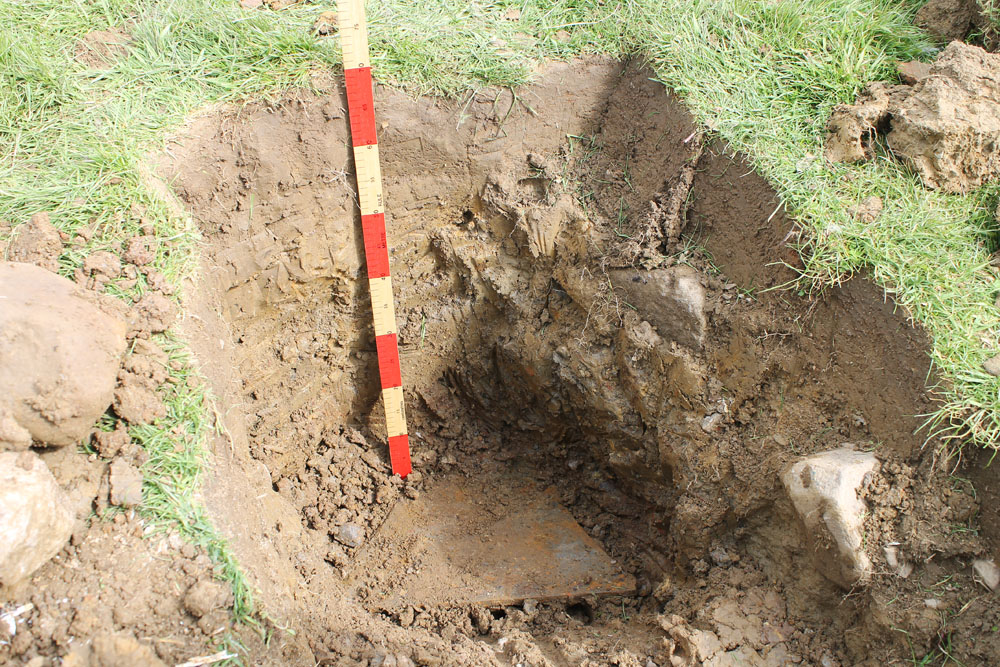
|
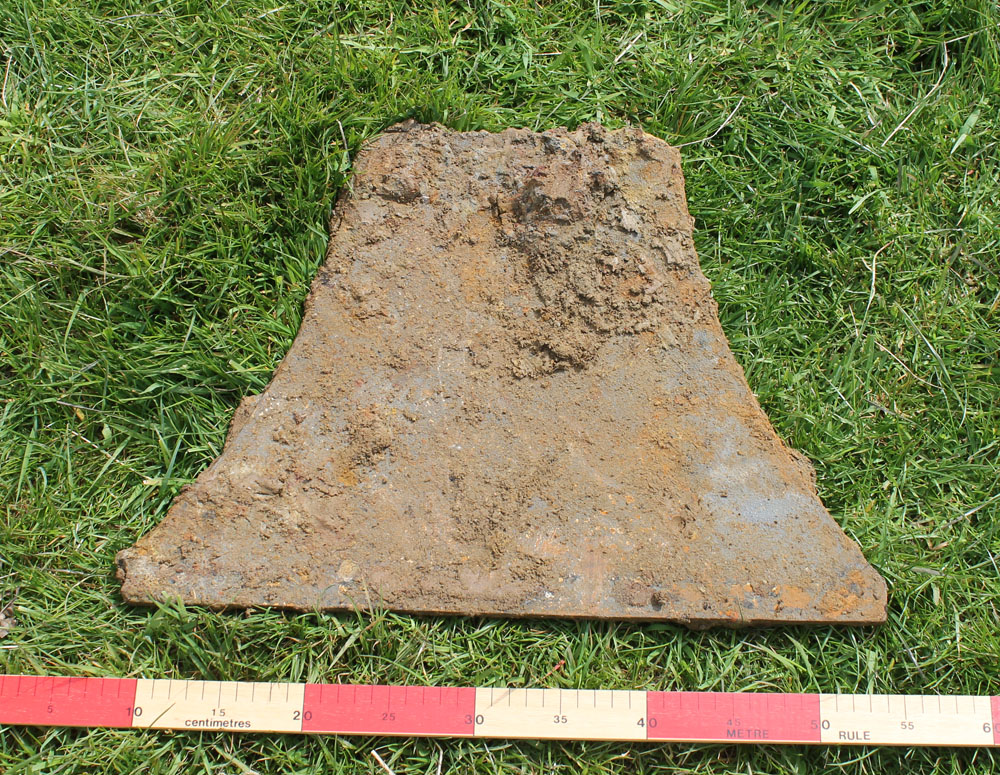
|
|
Outlying
contacts were recovered immediately before the main excavation
took place.
|
The
recovered Pilots
armoured headrest |
After
assessing the surveyed
contacts, along with documentary evidence of a high energy impact, we
believed
further remains could lie buried and consulted with the landowner, who
believed that the
aircraft could easily have
penetrated to a depth of between eight to ten feet. Therefore it was
decided to
apply for an MOD permit and use a mechanical excavator for further
investigation. Prior to the main excavation, the most significant
targets
outside the main feature were excavated by hand and proved to be the
aircraft's
oil cooler and the remains of the frame from behind the pilot's seat,
with the
armoured headrest still attached. A smaller signal proved to be a
mounting for
a .50 calibre machine gun and the remains of the gun's firing solenoid
and a
small group of signals to the opposite side of the main feature were
found to
be a hydraulic actuator and hydraulic pipe fittings believed to
originate from
the main undercarriage.
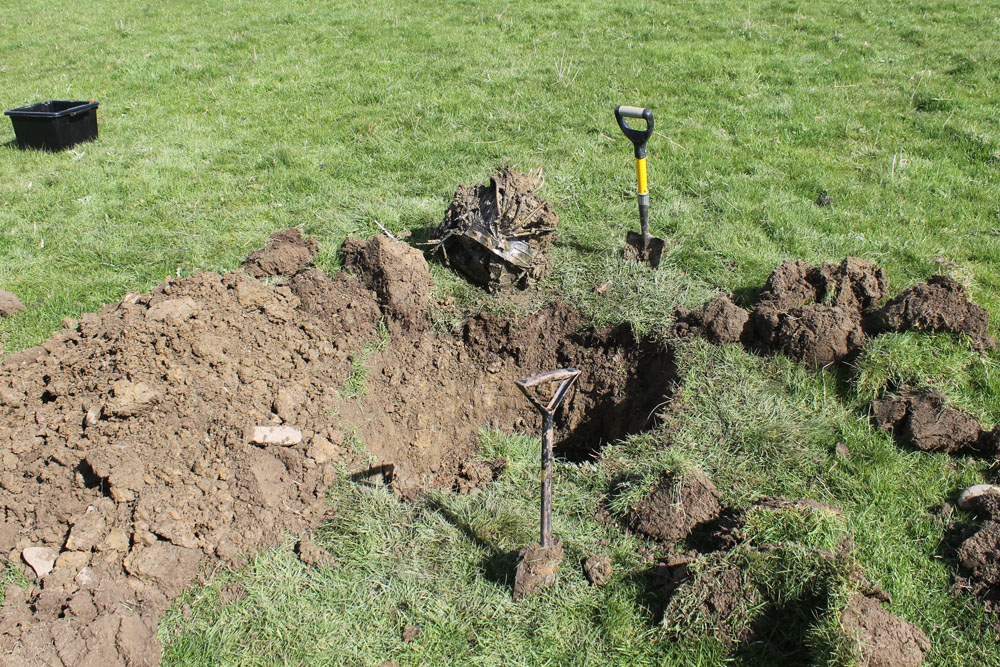 |
The
recovery of the oil cooler was perhaps the clearest
indication of
the aircraft breaking up prior to impact – it was buried some three to
four
feet deep, to the northeast of the main impact area and apart from a
few fragments of associated pipe work appeared to have fallen
there on its own.
|
When
the main excavation got underway, we found that, after
the initial removal of
the turf, a distinct darker outline of the "crater could be easily
discerned, with the soil within the feature clearly containing
fragments of
broken glass and pottery as well as animal bones, but very few pieces
that
appeared to have come from the aircraft. This was not immediately a
cause for
concern, due to our knowledge of the earlier dig. However, as we
continued,
significant ferrous metal debris began to be uncovered, including; sash
window
weights, heavy pipe sections, remains of buckets and household wares,
parts of
an iron cooking range and the remains of a bicycle. A few aircraft
remains were
also found, though these were scattered with no evidence of any in-situ
relationship to each other. At around three feet in depth, a darker
area of
subsoil could be discerned, indicating the path of the aircraft and
parts found
at this depth included smaller items from the engine, including; engine
casing
exhaust stubs, camshaft bearing caps and a camshaft drive gear.
However, the clay
subsoil also began to become noticeably more dense, with many small
boulders
and stones, until it became so hard at approx. five feet in depth, that
further
excavation proved difficult and it was clear that the aircraft had
penetrated
no further. Throughout the dig and during the reinstatement of the
site, a
number of team members were tasked with sifting through all the removed
spoil
by hand to ensure no items were missed and several small but
interesting parts
were found, including the fuel primer pump from the cockpit, both
ultra-violet
instrument panel lamps and the base of the radio antenna.
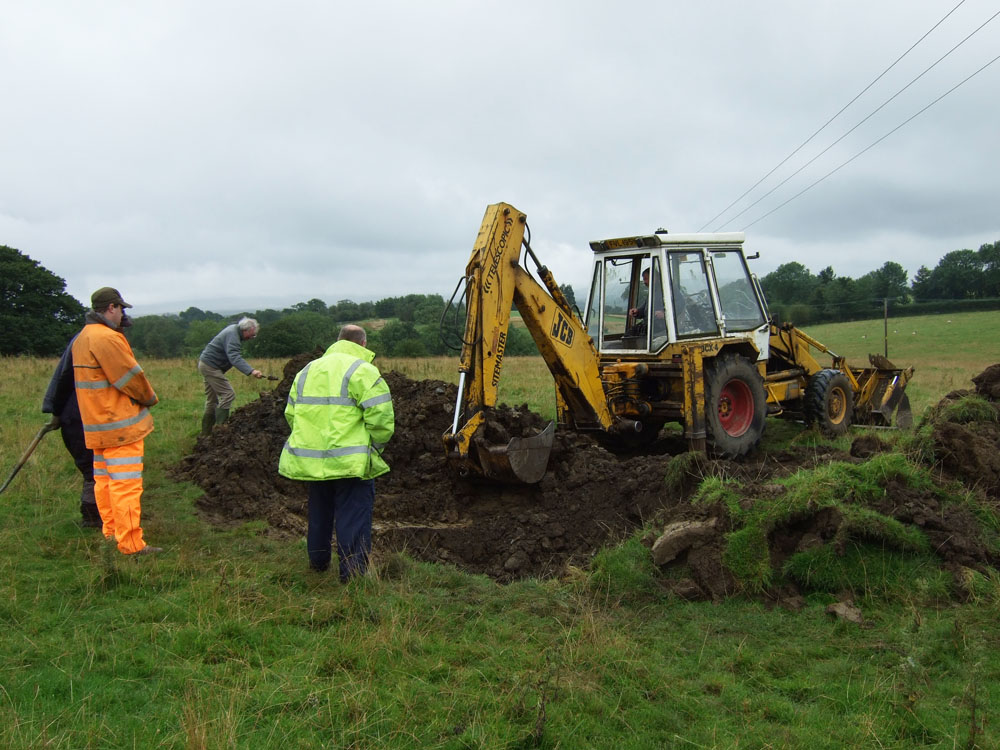 |
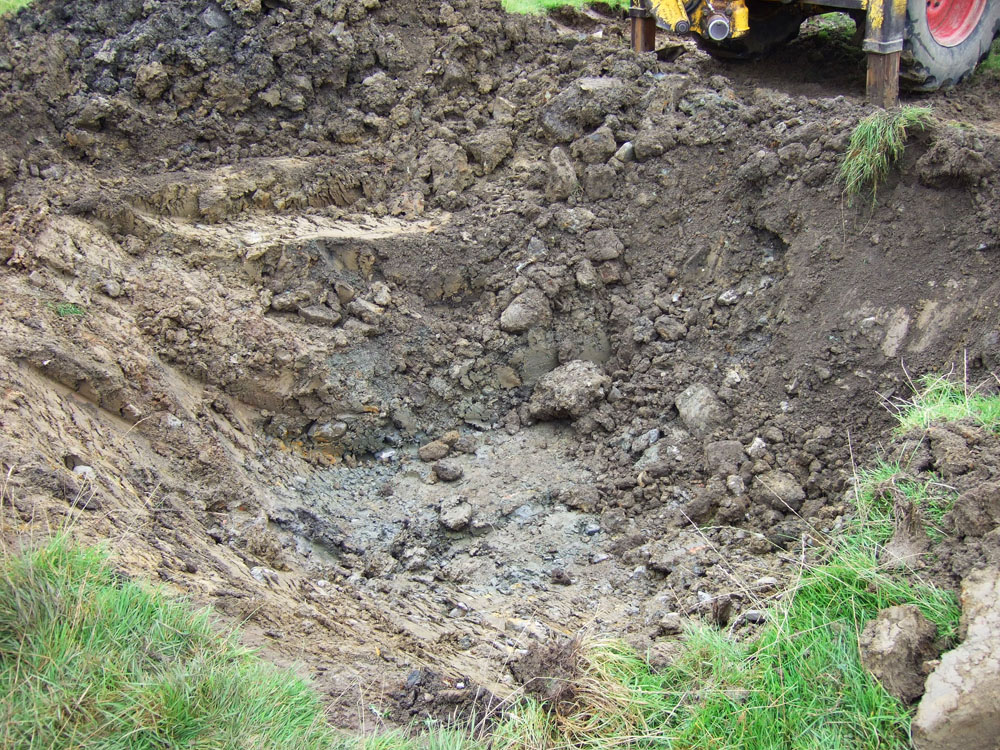
|
| The
main excavation gets underway |
Darker
subsoil to the centre of the excavation indicates where the engine
originally lay. |
Although the remains from the
aircraft were somewhat sparse, especially within the "crater" feature,
we were still satisfied that we had identified that this was the main
impact
point of the aircraft and that the darker area of subsoil that we
noted, at
around three to four feet below the surface, was probably oil
contamination and
indicated where the engine had become embedded and so was the deepest
point of
the aircraft's penetration. We concluded that the feature we observed
equated
to the two craters – one made by the engine and the other by the
detached port
wing, which are mentioned in the crash investigation report, but over
time and
due to past rubbish dumping, as well as the previous excavation, now
appeared
as one feature with no immediately obvious division. It was the parts
found
around the area were more useful in drawing any conclusions as to the
nature of
the impact and provided some definite tie-ins with the documentary
evidence in
the original crash investigation report. Finally the scatter of surface
fragments revealed no really distinct pattern that would indicate that
the
aircraft had approached the impact from any particular direction. There
was a
general distribution around the main impact point with perhaps more
fragments
to the west and south than the other directions, but we felt this was
more
likely due to them being thrown in this direction by the asymmetrical
nature of
the impact. This would appear to bear out the description in the
investigation report
of the dive having been almost vertical immediately prior to impact.
Acknowledgements:
Mr K. Proctor, Mark Sheldon, Alan Clark, Gareth
Brown, RAF Form 1180, Mustang III, Serial No. FX931 (PRO), Accident's
Branch Investigator's Report, Investigation No. W.2092
(PRO), Flypast
Magazine No.78
/ January 1988
This page & all articles on this site
Copyright © Nick Wotherspoon 2017








